A visit to Korcula Town on August 28, 2017, to explore a destination which is doing things just right.
Another eventful summer in Croatia is coming to an end, and there have been plenty of international headlines, from wildfires to party tourism. It has been a record season for sure, and the surge in numbers has exposed some pressure points in some of the top Croatian hotspots, as destinations grapple to deal with the mass tourism arrivals. The quick buck versus the long term commitment to quality, it is a debate that will no doubt continue through the winter months, as various experts and Internet trolls weigh in with their opinions. But there is one shining example to take a closer look at for those looking for a blueprint of what authentic, traditional and high quality tourism can look like on Croatia's Adriatic coast.
The town of Korcula.

Hvar is my first Croatian island love, and after 14 happy years on Europe's sunniest island, I have always been a little protective of it over other islands, despite certain elements there seemingly bent of moving it away from its rightful place as Croatia's premier island to a party destination. It was fully 12 years here before I had a proper visit to the island of Korcula, and I returned deeply impressed by almost everything I saw three years ago. Now happily living near Varazdin with less Hvar-centric vision, I was curious to see how Korcula was coping with this manic summer of party and mass tourism.
It turns out that it is not only coping rather well, but Korcula is quietly developing its tourism strategy to pitch itself as a more upmarket destination, celebrating its traditions and strengths, concentrating on quality and the more discerning tourist. Not in an elitist way, for all are welcome, but by providing a range of local experiences which scream quality and tradition.
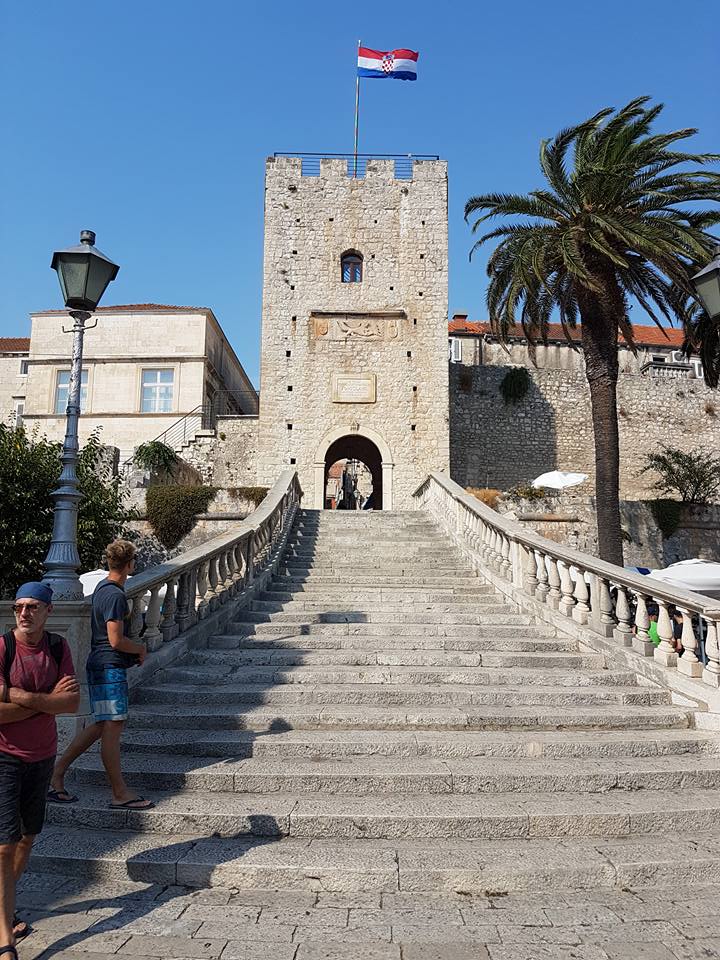
It always helps, of course, if you start with one of the most amazing and best-preserved old towns in Europe, a town which was the first in the world to abolish slavery in 1214, and whose shape is nothing short of architectural genius; look from the air and you will see that the small old town is constructed in the shape of a fish. And not only that, but the streets to the east are curved to block the cold winds, while the streets to the centre from the west are straight, allowing the Maestral wind to provide natural air-conditioning. All streets lead to one central street which forms the spine of the town, and all have stairs except one, which the locals refer to as The Street of Thinkers.
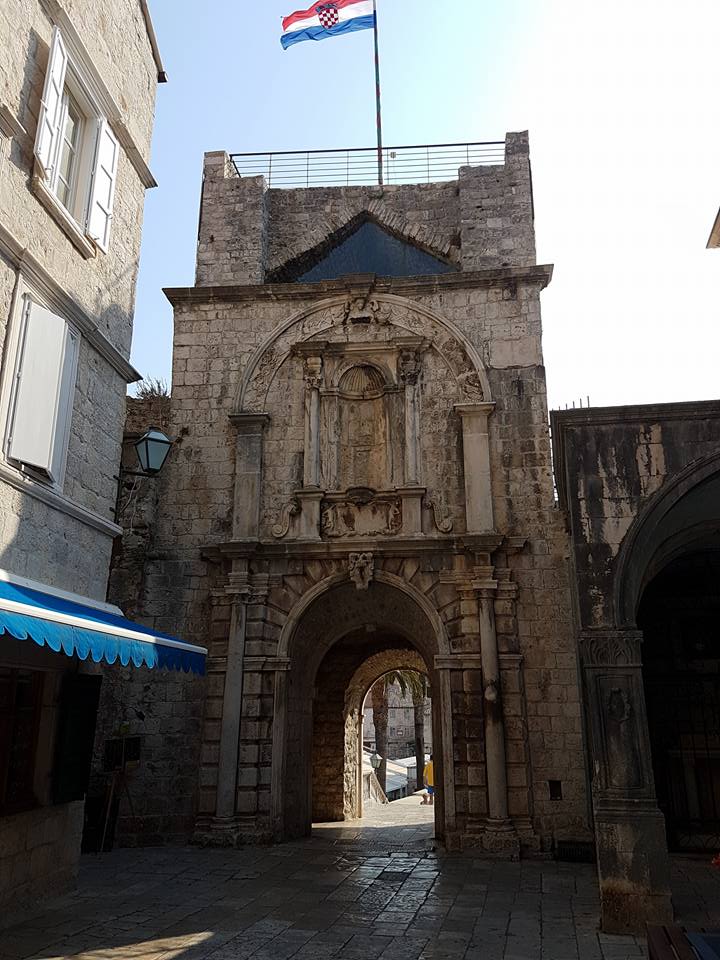
A picture postcard at every turn, but Korcula offered much, much more than infinite Instagram opportunities.
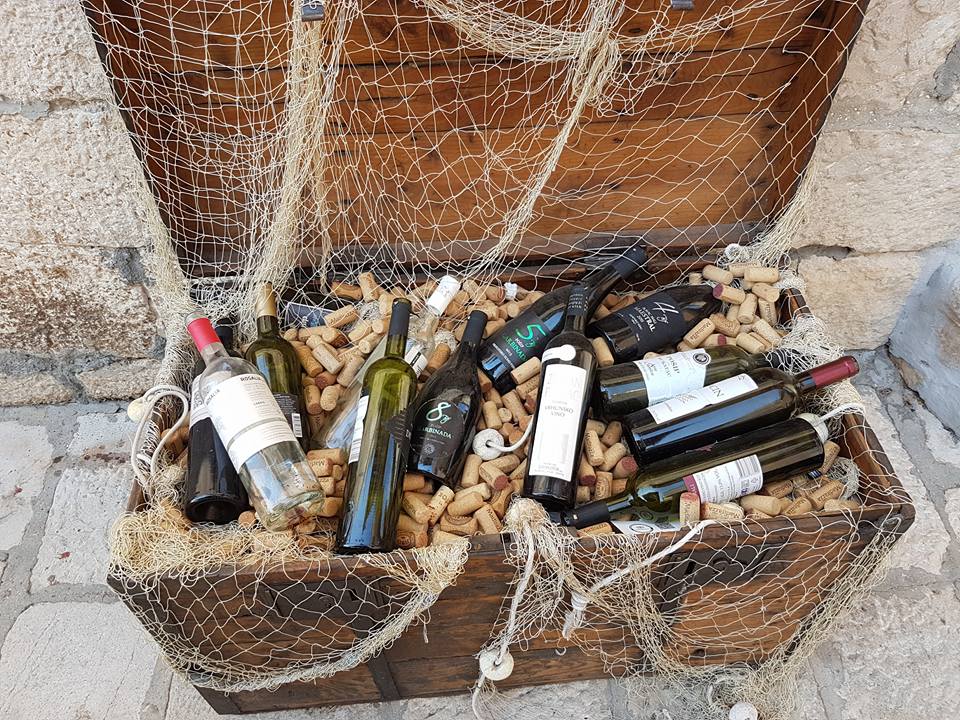
For Korcula is an island of wine, as is Hvar and Vis. But few destinations in the wine producing tourist areas of Croatia reinforce that message so stylishly or firmly. It is a sad fact that the majority of tourists to Hvar, for example, leave without knowing that it is a famous wine island, with over 2,000 years of history and some outstanding indigenous grape varieties. You would have to try very hard to leave the town of Korcula to come to the same conclusion.
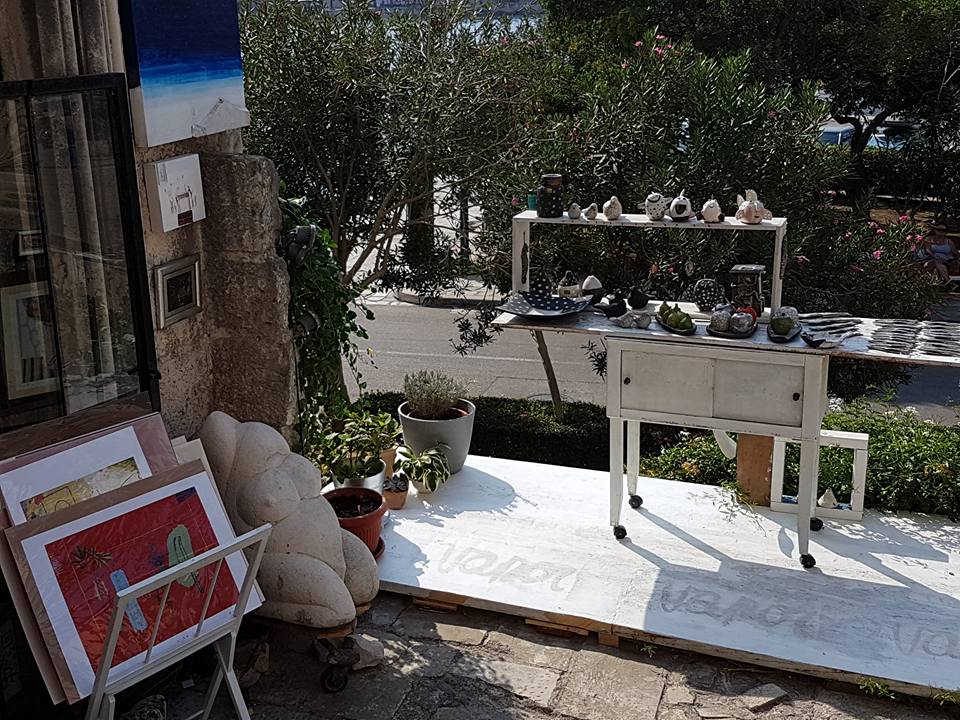
For wine, read art. As the gorgeous old towns of places like Dubrovnik empty of local residents and become almost museums for tourists, tiny Korcula town is very different. It is very much a living Medieval town in the modern era, and a town which celebrates its artists and artisans at every turn. Cosy, quaint and rather delightful. Here at one of the town's impressive entrances was an art shop which has been celebrating Korculan and Croatian artists for 20 years, 17 of them in this serene location.
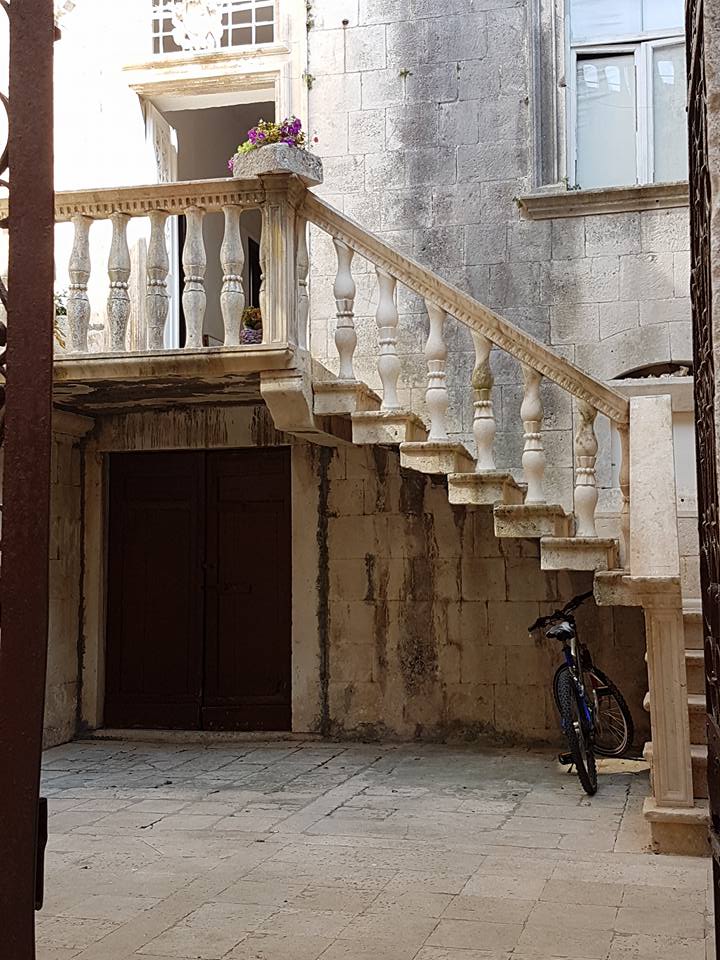
Picturesque little courtyards where time has stood still.
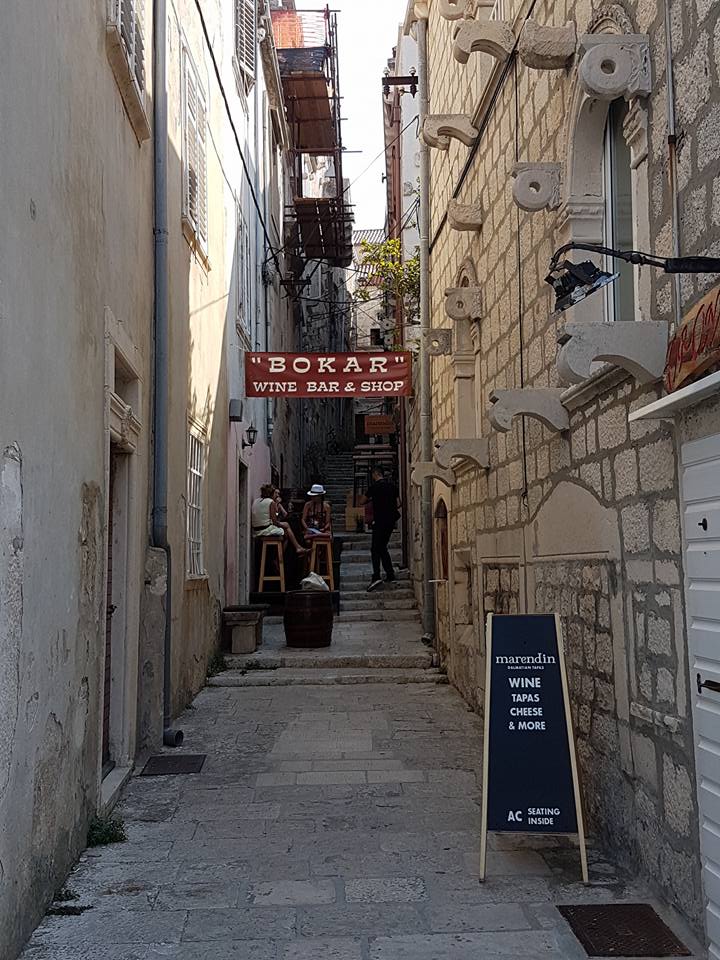
Wonderful little side streets leading to the central spine. Did you know Korcula makes excellent wine?
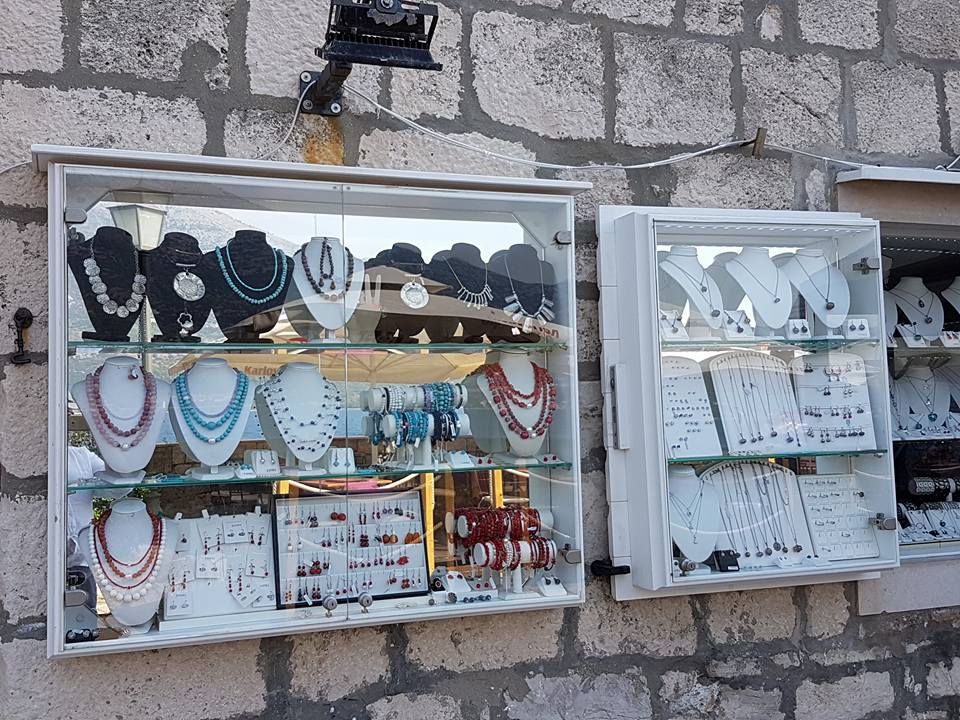
Artisans at every corner.
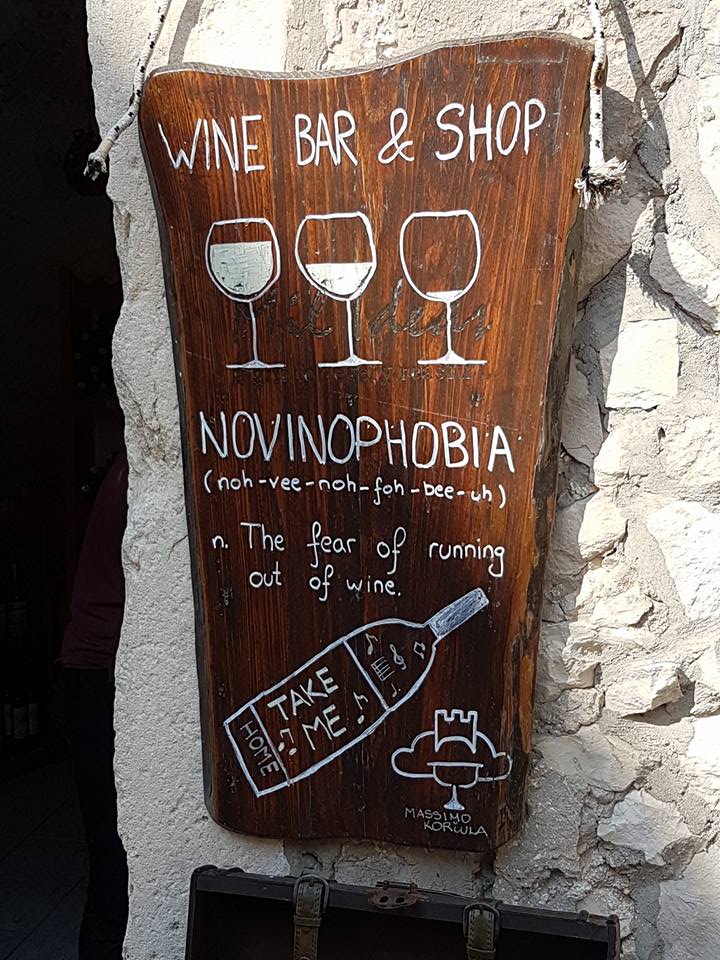
Possibly the biggest threat to tourism in Korcula - a new word to describe the fear of running out of wine.
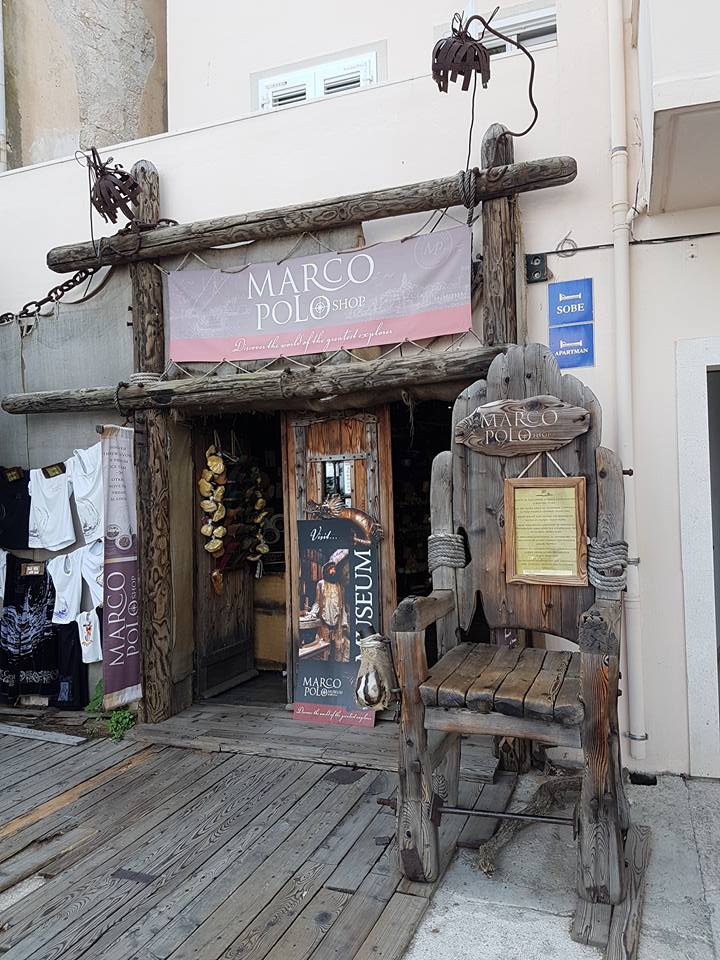
Korcula's most famous son, of course, is Marco Polo, and while the famous traveller is omnipresent in the town, there is no mass cashing in on the name with cheap souvenirs, but you can find souvenirs if you need them.
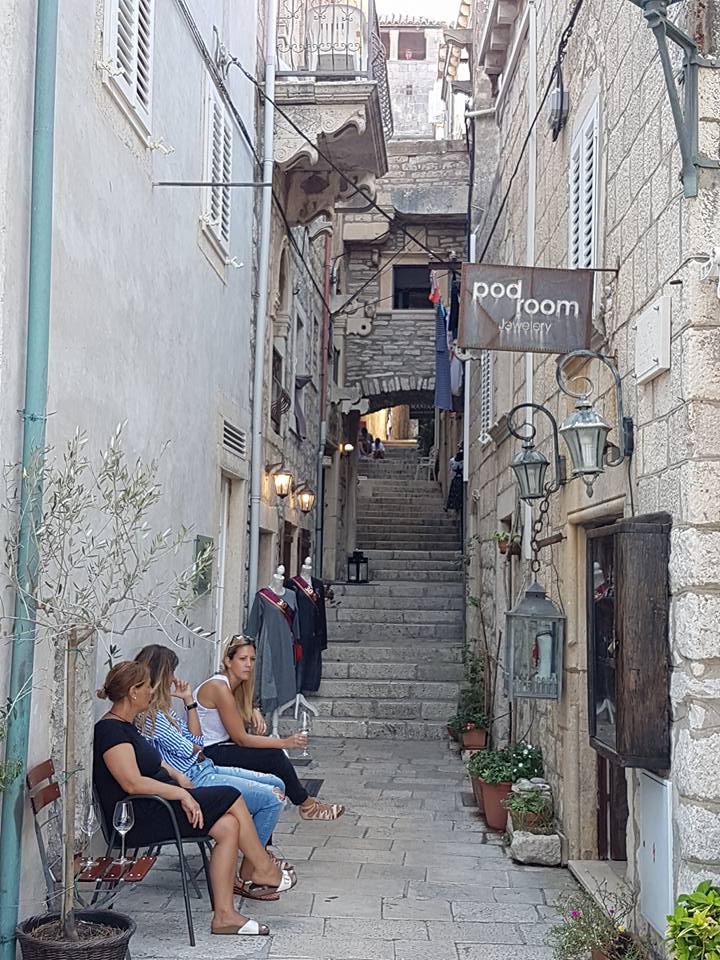
A place where time is relative, and the wine glasses occasionally empty.
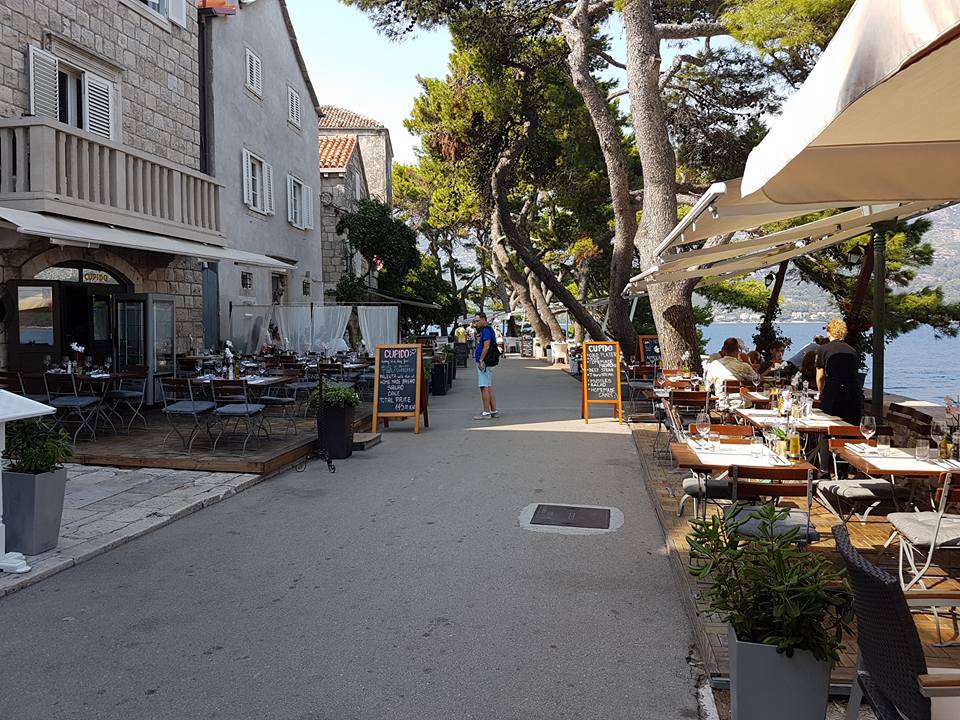
The most impressive street for me (and the biggest change for me since my first visit a few years ago) was Gourmet Street, a fabulous waterfront stroll along one of the town's entire outer walls. I remember the seating varying in quality last time, and the street made little impression on me back then as a gourmet attraction. This time, however, what a difference! And what a wonderful combination of excellent food, striking architecture and divine sea views.

And below each restaurant terrace, a small rocky beach. I met the Mayor of Korcula, a proud resident of the old town, who has been using this tiny bathing option daily for as long as he can remember.

Enough said.
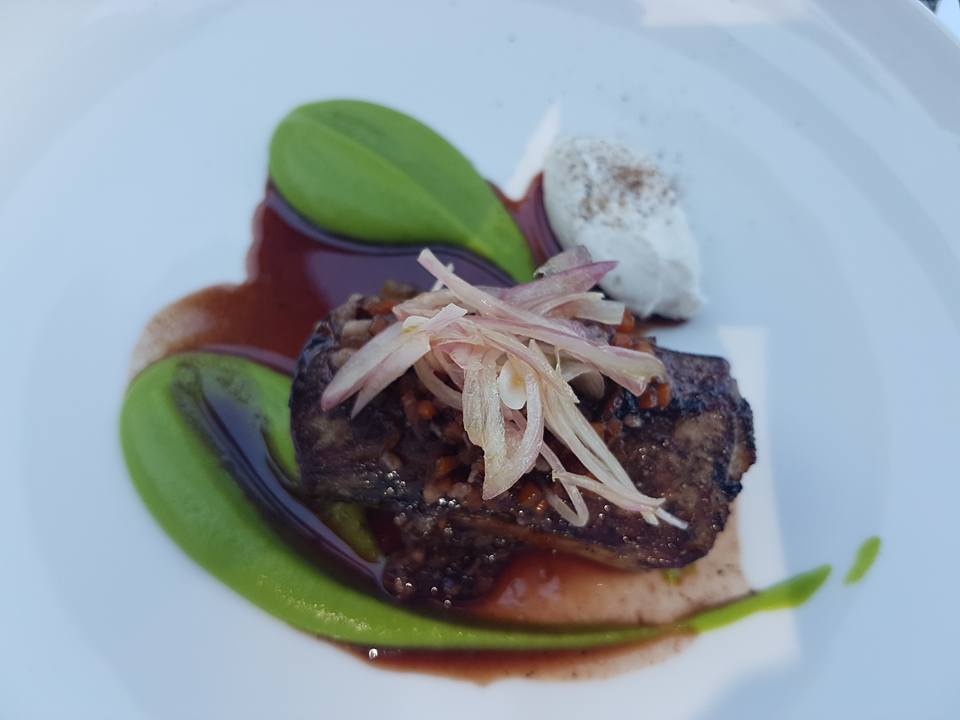
When the history books are written about the rise of quality tourism in Korcula Town, there will be a rather large chapter dedicated to the five-star boutique hotel called Lesic Dimitri, which was the undisputed pioneer in putting Korcula on the luxury tourism map. I was delighted to receive an invitation for lunch from its British owner, a lunch which deserves (and will receive) an article of its own, but the combination of location, ambience, food, wine and company made it one of the top experiences of 2017. Thank you, Sir!
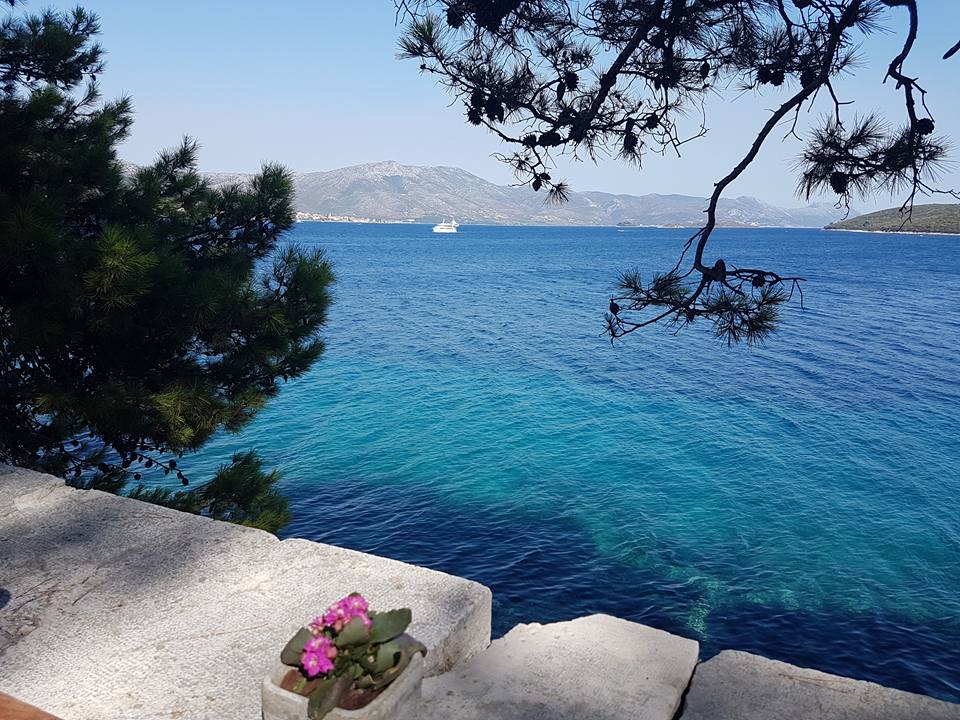
The Lesic Dimitri terrace view, a visual delight which was more than matched by the food and wine in the outstanding Chef's Tasting Menu.

Ah, that wine message again.
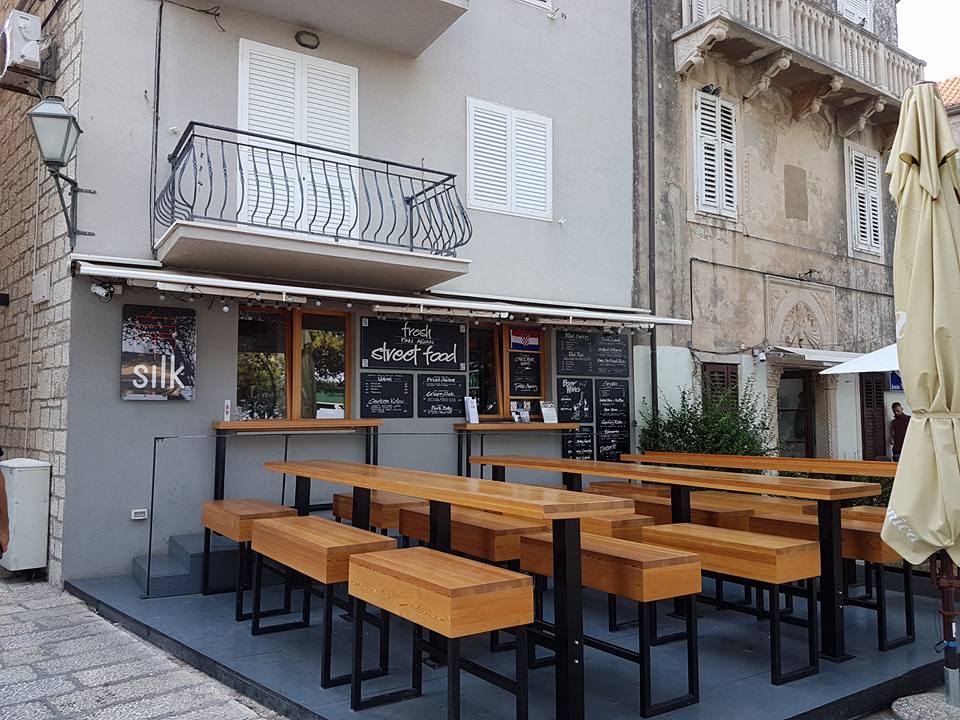
Dalmatian cuisine is outstanding, and I recommend you try it extensively while on holiday, but variety is the spice of life, and here in the heart of Marco Polo's home town, a hint of his exotic travels on the exclusive gourmet waterfront. Meet Silk, an impressive addition to the Korculan dining scene, and one which is certainly making an impression on locals and tourists alike, currently standing at number 6 on TripAdvisor, quite an achievement in this fine dining town.
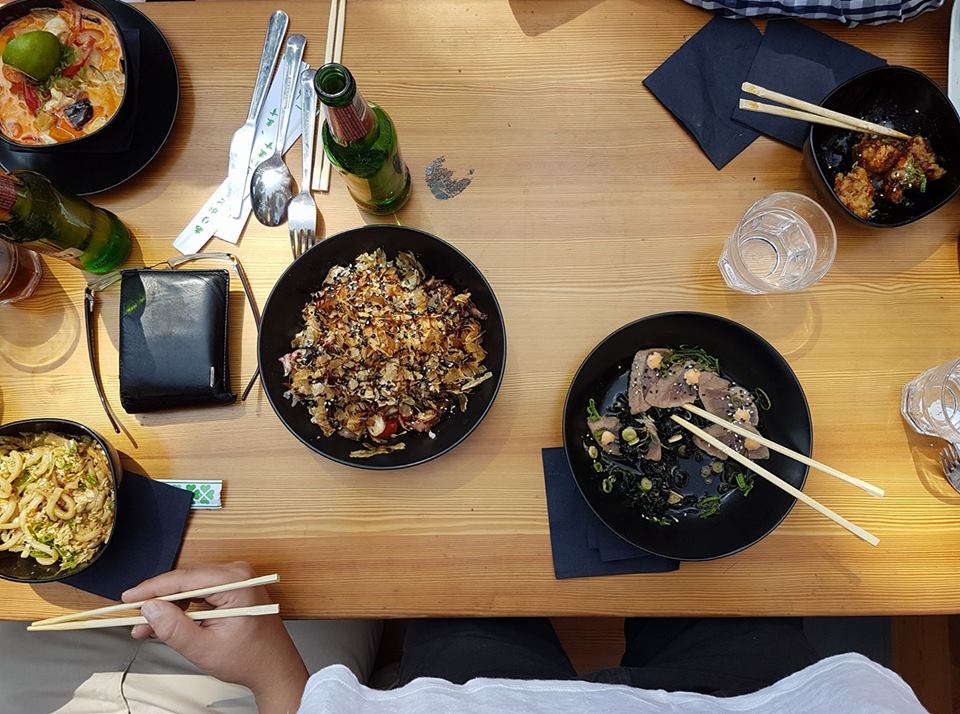
Lunch from above, a welcome occasional change from the usual Dalmatian fare.

After lunch, and the artistic exploring continued, leading to the perfect Korcula souvenir for my two daughters. The unique crayon concept of Boya has won international awards and received a letter of thanks and appreciation from Prince Charles - a Korcula business we will be featuring in a full-length interview with the innovative young creator shortly.
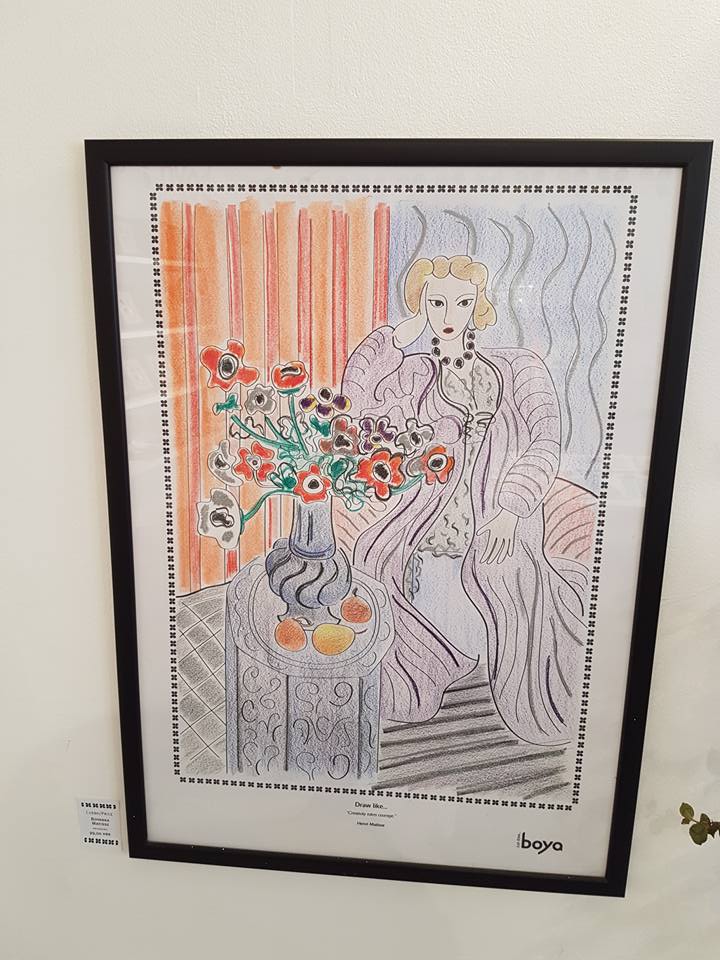
The crayons were an absolute hit back home, and all I am now waiting for is for my kids to reproduce crayon art of this quality.
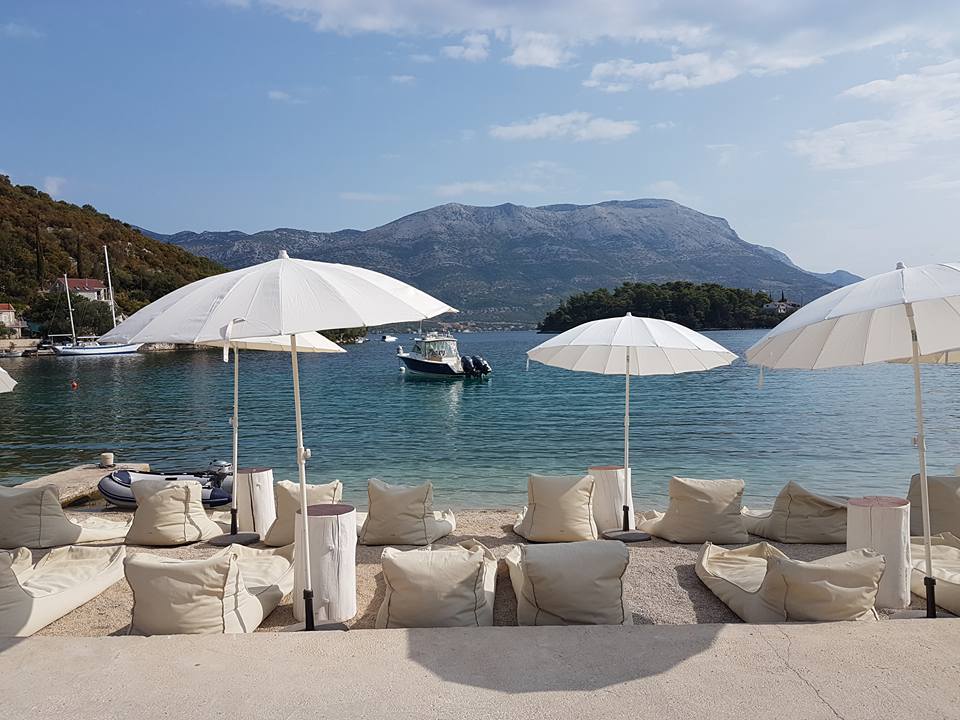
The message of quality is spreading, and I am very grateful to the team at Tara's Lodge (about whom you will be hearing more of shortly) for introducing me to an outstanding luxury project in an idyllic bay 5km from the town, and one of the great chill-out spots in Dalmatia.
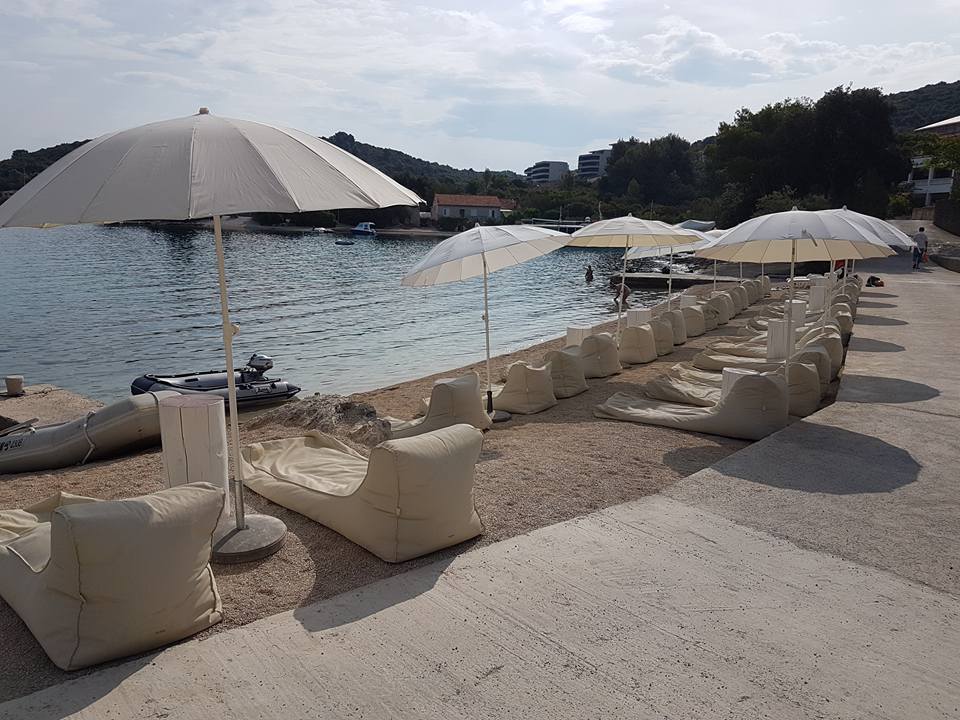
It only took 11 years to get the building permission and a further four to complete the construction, but I think you will agree that the wait was worth it. While you waiting for our Tara's Lodge feature, you can learn more about this hidden gem here.
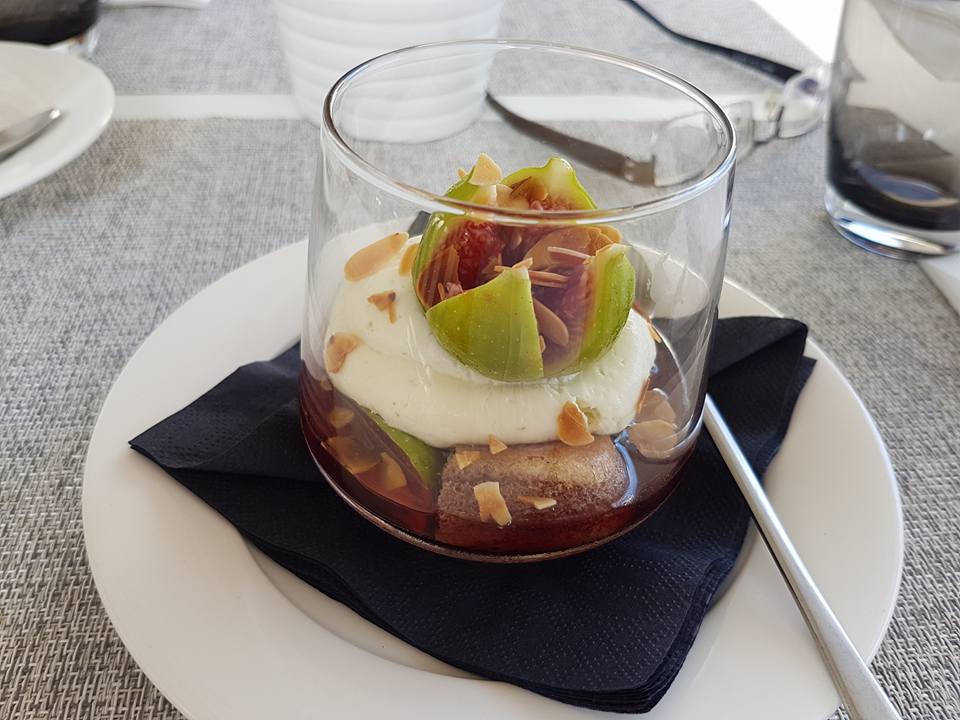
But as a taster, this is what happens when a Portuguese chef finds inspiration in Paradise. From the Tara's Lodge daily special - fig trifle with port and lemon mousse. And it tastes even better than it looks.
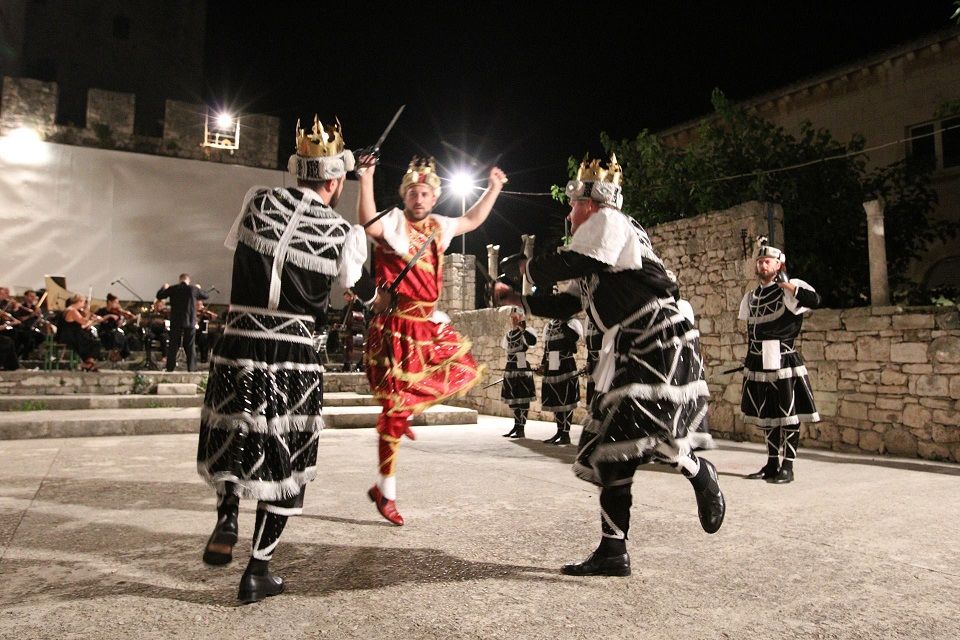
I asked several locals what it is that defines Korcula Town as a destination, and the overwhelming response to that was 'Culture'.
It is a truly fascinating town, and one which takes its culture very seriously. The marvellous Moreska sword dancers will one again be in action tomorrow for the start of the Korkyra Baroque Festival (read more about it here), a rich festival celebrating culture and started by that man from Lesic Dimitri.
There is nightlife for the younger generation too, but the nightclub is located a short drive from the town, meaning the offer is there, without disturbing the ambience of the town. A luxury beach club has just opened this summer on one of the many small islands in front of the town.
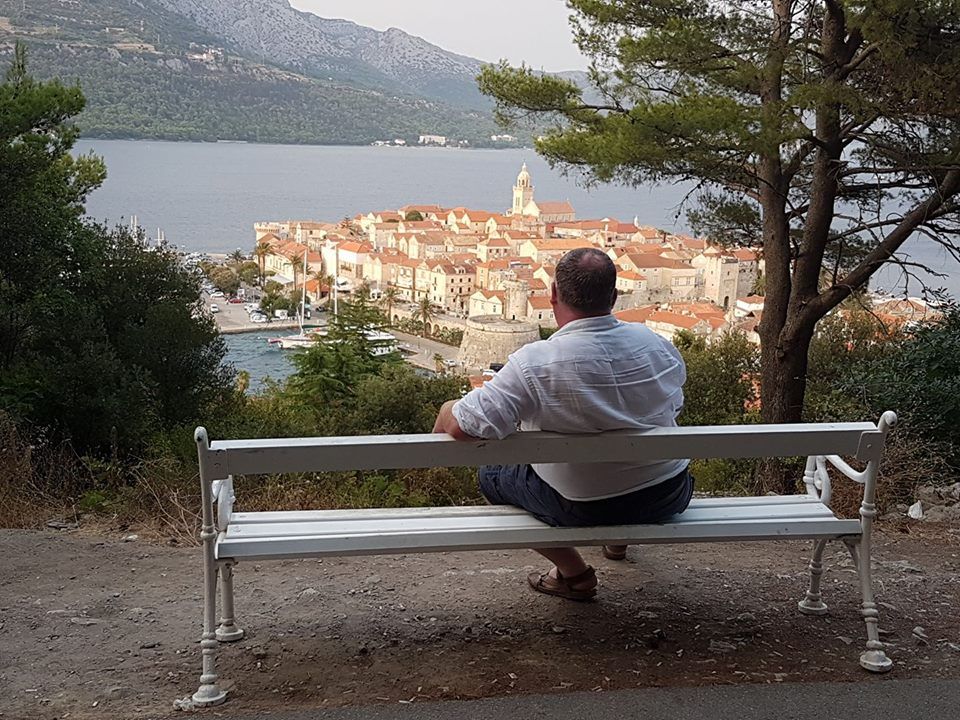
And as I sat on the bench overlooking the historic old town, I not only applauded the direction Korcula Town is moving, but also contemplated its fabulous location and neighbours. The rest of the island is divine, with excellent beaches, nature, activities and (did I mention this before?) wine, but its close connection to the Peljesac Peninsula (regular ferries to Orebic take just 15 minutes) mean that the town's attractions extend beyond the island itself. Korcula's famous Grk and Posip white wines are complimented by the powerful peninsula Plavac Malis, and starting with the oysters at the renowned walls of Ston, the prospect of developing Korcula and Peljesac together as an upmarket gourmet and cultural centre was as appetising as the food itself.
I was trying to figure out what else made Korcula a different experience for me than other Dalmatian towns this summer, and then I realised that I had not seen one drunk person, not even a tourist walking around topless or sitting and drinking in the street. Korcula is not that kind of place, and nor should it be.
Bravo Korcula. You are the Mediterranean as It Once Was and the Mediterranean as It Should Be.
Want to learn more about the island of Korcula? 25 Things to Know.


